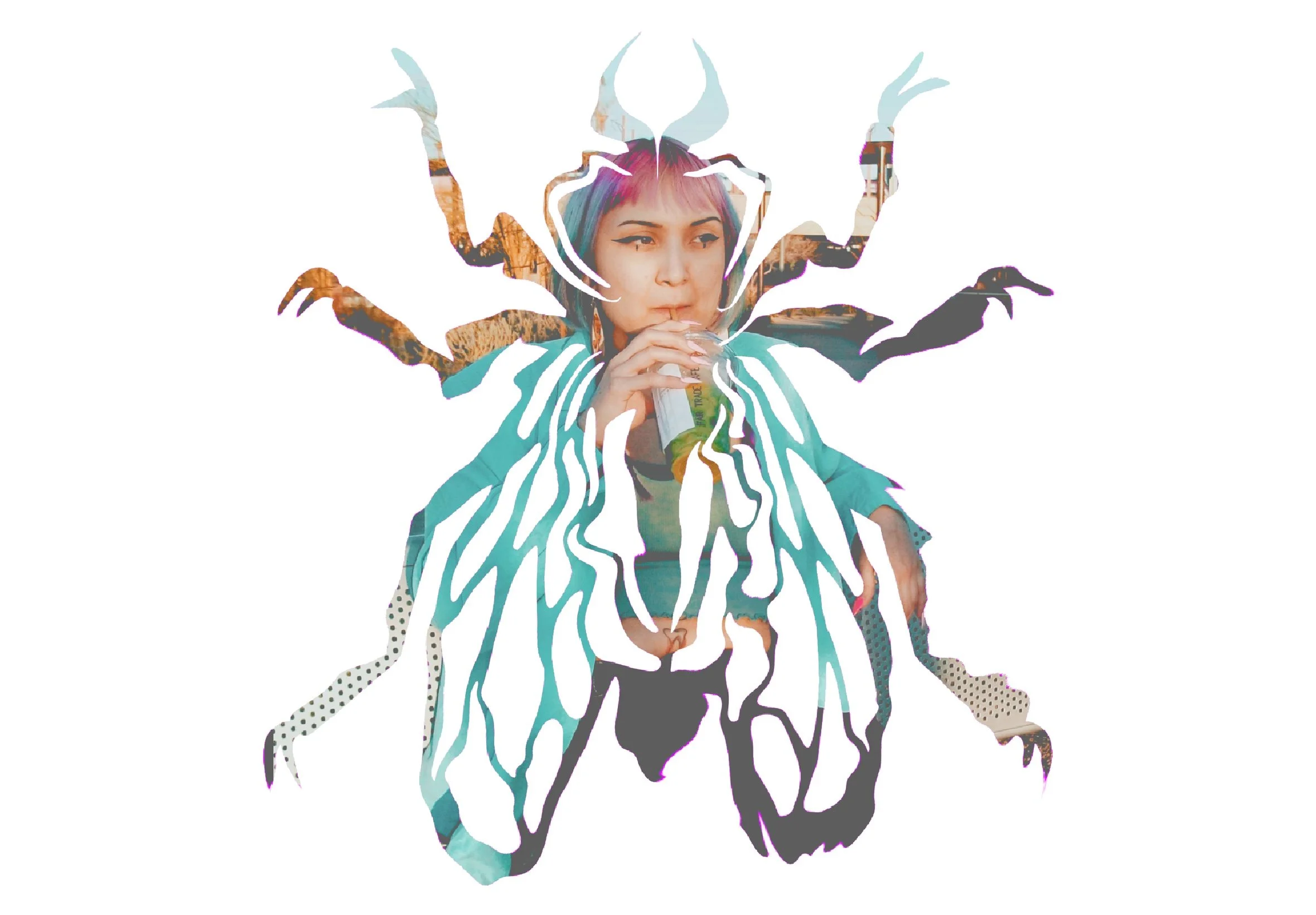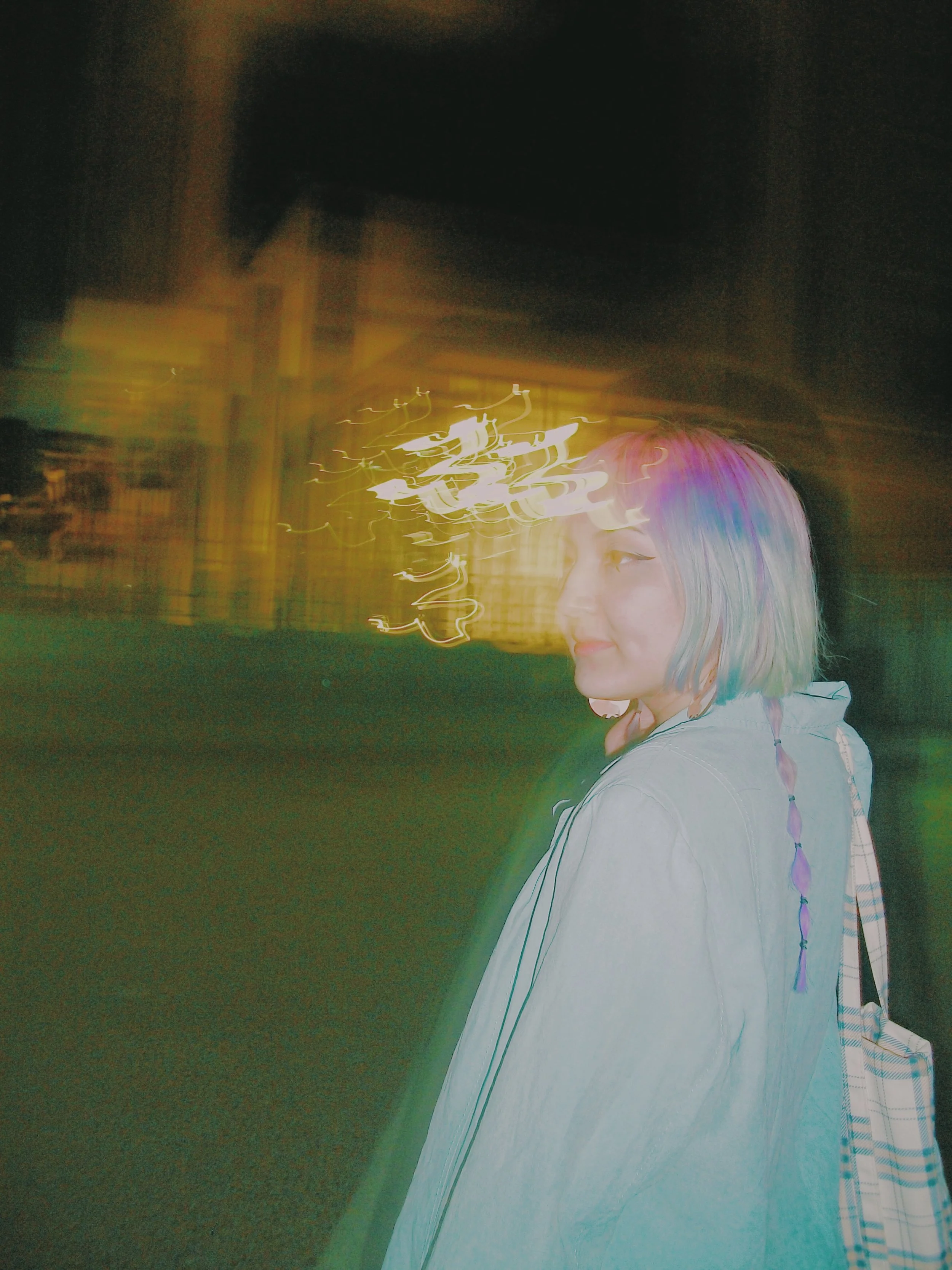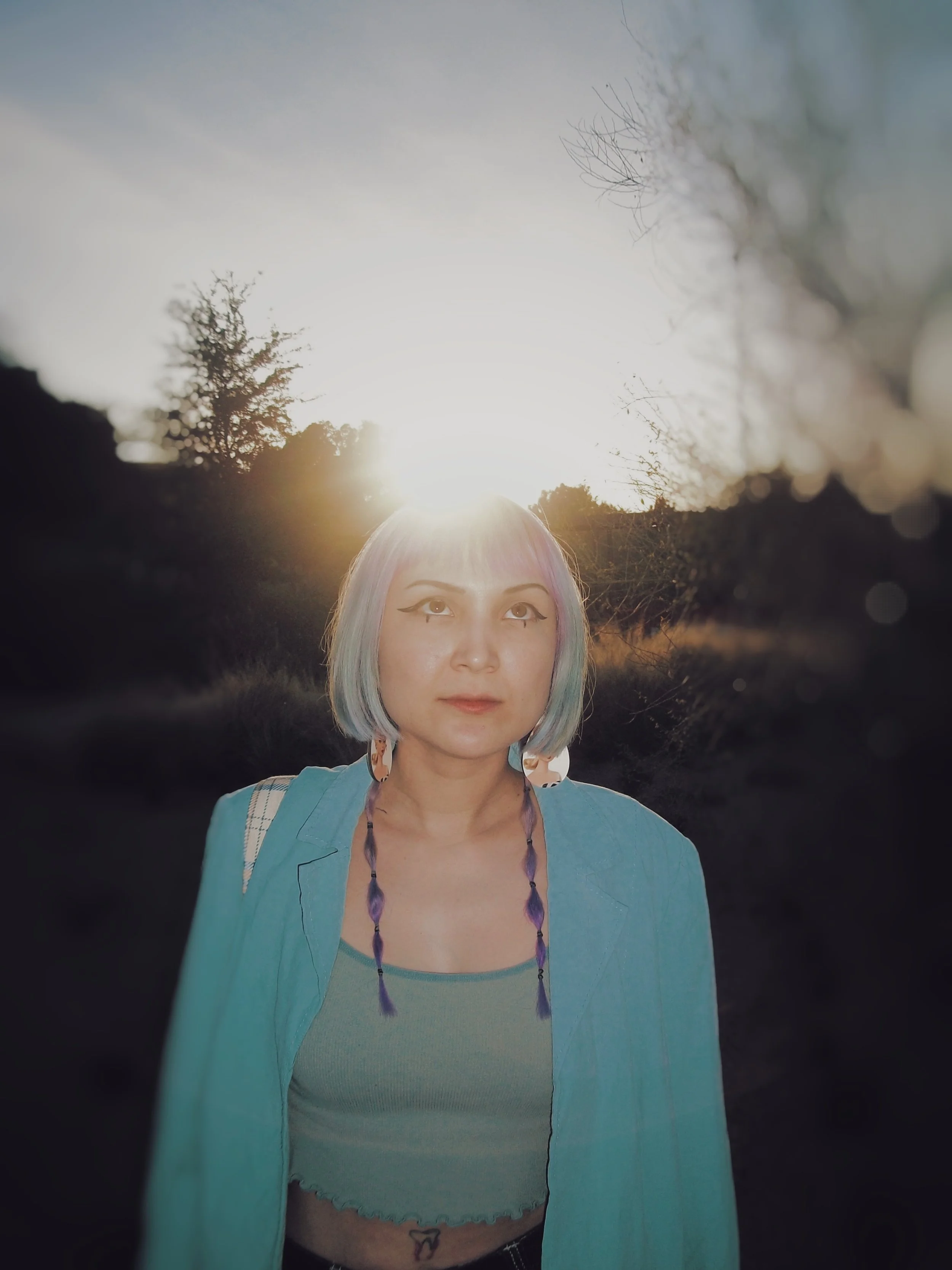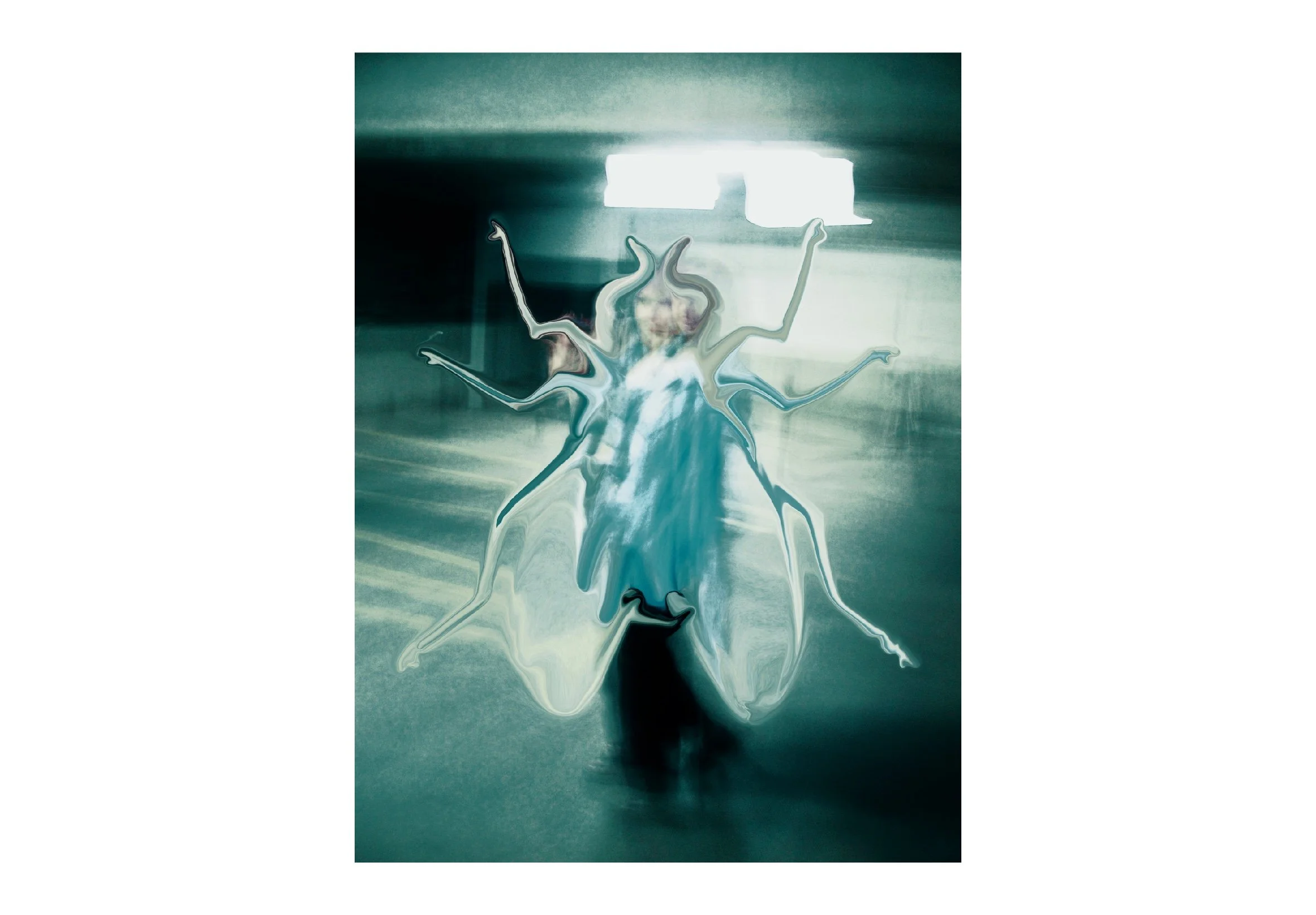In Conversation With Jazz: The Ideas of “Culture”
“IN CONVERSATION WITH” IS A BRAND NEW CONVERSATIONAL INTERVIEW SERIES WHERE WE SIT DOWN WITH CONTEMPORARY ARTISTS AND DISCUSS TOPICS THAT ARE IMPORTANT TO THEM.
(All conversations are recorded, and transcribed by BrassTuna.)
This Conversation has been edited for length and clarity
Jazz Enriquez (They/Them/He/She) is a gender fluid artist who was born and raised in Phoenix. They are a strong advocate for mental health and have utilized art in their own healing journey throughout difficult times. At a young age, Jazz started incorporating their fascination of entomology into their artwork-- initially as a self-challenge project, They quickly found power in the poetry of this subject matter. Since then, They continue to utilize morbid and macabre themes in order to explore topics such as identity, culture, and narrative story-telling. Jazz strongly believes participating in the art community not only means creating, but supporting and celebrating those amongst us as well.
BrassTuna: Hello Jazz, thank you for joining me today.
Would you mind telling us a little bit about yourself?
Jazz: “Well,,, I am the youngest of my family.”
“I was born in Phoenix, Arizona. My parents are from Mexico, and my siblings are from California ,,, so I was kind of the first one born in this city, and the first to start exploring this community.”
“As well as finding a true love for art in it, so I think ever since I was young ,, I had love for those two things ,,, the community ‘the people’ and the artwork.”
“A lot of that came from my parents who taught me to just explore my surroundings.”
BrassTuna: Thank you for that wonderful introduction Jazz.
Lets go ahead and get started. . .
Today the topic we will be discussing is about the ideas of Cultural Influence in artwork …
and it can be in which ever way you interpret that topic.
Would you mind starting us off?
Jazz: “I feel like culture is a fun topic to go into.”
“There are many subsects of culture, and I think each one of us, as individuals, are very multifaceted and have a hold of not just one culture, but many.”
“And it’s nice that those collections of multiple cultures can then become your own ,,, as well as your identity.”
“What I really identify with is the queer community, and I think that’s something that took me a while to “fall into” on my own journey. That, along with being Latino, has also brought forth many other obstacles that I couldn’t really understand while going through it, but as I get older it's been nice to dive into it in retrospect.”
“Even in the smallest ways things about myself have been influencing the things that I do, including my artwork.”
“I started working with bugs when I was about 13 or 14 because ,,, sometimes my dad would bring around a dead bug to funnily scare my mom or I, and at that time I was deathly afraid of them.”
“And I think there is a similar way people treat and look at bugs, much as the way they treat and look at queer individuals. As well as, in my experience, Latinos.”
“So I think it’s been kind of beautiful to find a poetic connection between those two.”
BrassTuna: I feel like these are two topics you and I can relate on.
We both share that queer communal background as well as our Mexican-American background and our community ties to each.
I think for me I look back on my background as being a queer individual and I think that whether or not I knew it, it was always influencing my work, and what I enjoy.
With that specific “community background” in mind, would you mind expanding on how your queer existence has influenced your art?
Jazz: “For sure, like you said. It was in ways that I didn’t even realize while it was happening but as I come into ,,,”
“Like I think it had come into fruition in my own artwork first rather than my own psyche, and my identity in myself. “
“It was almost as if art was used or a process in order to find myself, and be comfortable within my own skin… in multiple ways, not just within my sexual orientation, but also who I am as an individual.”
“So when I was working with bugs, I kind of enjoyed the way people would react, because sometimes people would be like ‘ugh, weird,’ and I think I enjoyed those reactions because it felt almost like they were reacting to me as a person, and me being queer, or Latino.”
“And there were many times in my journey where I kind of hid and was a bit cryptic. So I think having people “lash out” at my artwork was my way of experiencing how they would treat or view me.”
BrassTuna: Would you say that your artwork helped you come to terms with your identity?
Jazz: “Most definitely, as well as going to therapy,,,”
“I was very fortunate to have professionals who understood me, and utilized art in order to help me.”
“And they understood how healing art was for me.”
“I’m not sure if they are under the same name but they were called “Arizona Art Heals,” which was another great way to connect with others in the community who were kind of going through similar things as I.”
BrassTuna: I’m definitely going to check them out. I haven’t seen many organizations like that here in Phoenix…
One of the biggest points I try and get across in my art is that the art space should be a healing space for queer individuals.
Yes, all individuals should feel welcome ,,, but there are so many times I see that queer people feel there isn’t a space for them… And art should always be a space to find healing…
…
We are going to switch gears a bit here, you had mentioned earlier, that there are many intersects for you and the community.
But would you mind expanding on your Latino background in the Mexican-American community? And in which ways has that identity influenced your work?
Jazz: “I feel like when it comes to my Mexican background, it has always kind of been a field of limbo for me because I am the most “Americanized” individual within my whole family.”
“Both of my parents ,,, well my mom is from a city in Mexico, and my dad is from a farm town ,,, and they hold a lot of their roots in their culture.”
“But they also moved to the US in their teenage years, so they have become somewhat “Americanized,” so when it comes to parenting, I think they had a unique way of teaching, so it led caused them to work harder.”
“On top of that, both of my parents were widowed prior to being together. Those ideas of grief and dealing with those emotions then rubbed off on the themes and ideas I explore.”
BrassTuna: Interesting ,,, do you feel those ideas still influence your work today?
Jazz: “Yes, most definitely. I think being closer to the “horrors” or the darker things, makes you appreciate life and what it is.”
BrassTuna: Does your “American” identity influence your work in a similar way?
Jazz: “I feel like something that is very “cool” about America, is the idea of it being a melting pot.”
“In my family, my siblings and I all have very different beliefs. And I think it’s so interesting because it’s such an American thing,,, where we can all believe different things.
But at the end of the day, you still come to a house where we all say “I love you.”
“But I do think it only makes me stand stringer in my beliefs and in my work having siblings like them… and the fact that no matter what I love them, so I’ll find new ways to deliver those messages.”
BrassTuna: "It’s funny because I see this intertwining between your work and those beliefs.
You work with bugs which could be seen as something you don’t like or don’t want to see, but you find ways to deliver them to people, in ways they can then enjoy them.
Jazz: “You will run into people who believe differently than you and it’s super easy to just shut them out.”
“I think there is something fruitful between both sides when you see each other and overcome those differences.”
BrassTuna: Well as we reach the end of our conversation,,, doesn’t it go by so fast? Lol.
Can you tell us a couple of final thoughts on this idea of culture and how it can intertwine into identity and art?
Jazz: “I think the next time people appreciate artwork or an art piece, whether it be because of the colors it has or the themes,,, I would highly encourage them to really think about what it is in history, or the world that has influenced the piece.”
“Then once you’re past that first part, go out into the world and look into those ideas. I think that will make you appreciate whatever artwork it is you find interesting ,,, and you may find ways in which it connects back into you.”
BrassTuna: Thank you again, Jazz for joining me today, it’s always a pleasure.
Thank you again to Jazz Enriquez for joining BrassTuna for our April “In Conversation With” series.
(If you or someone you know would like to be a featured artist for one of BrassTuna’s upcoming “In Conversation With” interviews, please fill out the Contact Form located below.)




